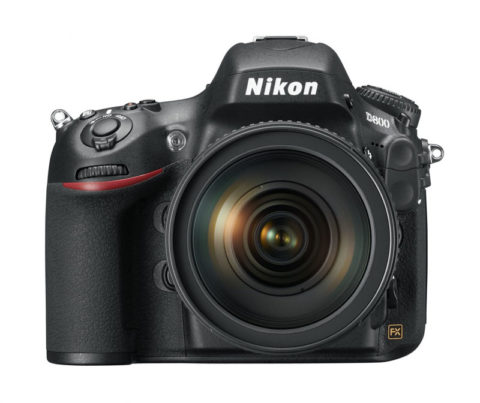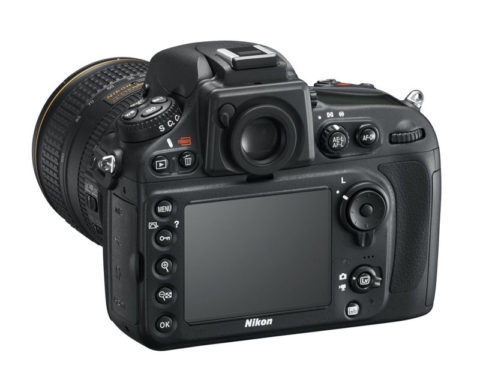Nikon D800/D800E
Well they’ve gone and done it again, Nikon’s pushed out another damn impressive still camera for those on a budget. It’s too bad, in my opinion, that Canon won’t take a page out of their playbook and do something similar.
So the brass tacks are as follows
- 36.3 MP effective FX sensor
- Base ISO range of 100-6400, expands to 50-25,600
- 4 FPS without the standard EN-EL15 battery, 6 FPS with the EN-EL18 (D4’s) battery in the MB-D12 grip
- Pentaprism viewfinder with 100% frame coverage at .7x
- 51-point D4 AF system
- Dual Card slots: 1- Compact Flash & 1- SD
Sensor and Frame Rate
The thing I think that impresses me the most is the frame rate at the sensor resolution they’re getting.When it comes to frame rate there are things that can become limiting factors, one is the time it takes for the mirror to cycle back down and the AF and metering systems to collect the data they need, the second is the amount of data that has to be read from the sensor and processed. This has been part of the force behind the megapixel limitations seen in the sports cameras, over their similar but higher resolution “studio” counterparts.
In the case of the D800, 6 FPS is well below the mirror blackout limits which makes the frame rate all that more impressive to me—it’s entirely data processing limited.
Of course, it’s not entirely unexpected that Nikon could pull this off; the Nikon 1 cameras could shoot 60 10MP 12-bit frames per second pushing close to 900MB/s though the processor, at least for short bursts. The D800’s max of six 36.3MP 14-bit frames per second nets a respectable 364 MB/s. For comparison, Canon’s 1Dx can push 14 14-bit 18MP frames a second or about 420MB/s but uses 2 processors to do it.
Secondly Nikon has decided to offer a version with out the anti-aliasing filter, the D800E. Without the AA filter, who’s job is basically to blur incoming light to reduce moire patterns, the D800E will be able to resolve more detail than any other small format SLR on the market. In fact, this is one of the key features that set medium format digital backs apart from their small format cousins when it comes to resolving detail. Unfortunately it’s a binary choice, you either buy a D800 with the AA filter, or a D800E without it.
Storage
Though perhaps not necessary worthy of a section all to it’s self, Nikon has upped the storage game on the D800 over the D700 predecessor. Instead of a single compact flash, the D800/E has a compact flash slot as well as a secure digital slot.
This has always been a baffling move to me, regardless of brand. Having two flash formats ultimately necessitates investing in both if redundancy is important. Moreover, it’s becoming increasingly apparent to me, that if you’re going to roll with multiple card slots they should be designed to be factory interchangeable. That is, I should be able to send the camera off to Nikon and have the SD slot changed out for a CF one.
Auto Focus
The D800 follows the D700’s footsteps in using it’s bigger siblings AF system, that is to say the D800/E has the same expanded 51-point system found in the D4. Including 1 cross and 10 horizontal points sensitive with lenses and lens plus teleconverter combinations of f/8
Personally I’ve always though this was a brilliant play. Differentiating SLRs, especially now when they are so auto focus centric in design, by hamstringing them with a piss poor auto focus system like Canon has, is simply off putting. Moreover, it goes back to cutting costs, in that you’re using one less model specific part across your camera models. Think of it like amortizing the costs of the pro AF system by selling gobs of them at the semi-pro level.
Needless to say I think this is one trait I think Canon should really pick up on.
A Look at Usability
That said, there are a couple of places where Nikon dropped the ball, mostly in terms of usability. There has long been a marked asymmetry when it comes to usability between the normal “landscape” grip and the vertical/portrait/battery grip. Nikon had been ahead in some ways with that on the D300/D700 where the add on battery grip included an AF controller thumb stick, making at lest some headway.
The problem then shifted to the DoF preview and function buttons on the front. The D300 and D700 at least places the DoF preview button fairly close to the bottom, meaning it wasn’t really out of reach regardless of whether you used the grip or not.
The D800 exacerbates the problem to some degree, moving the two front function buttons closer together and closer to the top of the camera. While the lower of the two buttons likely won’t be unreachable from the vertical grip, it will be more of a reach. This whole issue would of course be moot, if those buttons were duplicated on the front of the battery grip, unfortunately that doesn’t seem to be the case.
Another usability change that’s been made to the D800 is the way the drive mode dial is orientated. On the D300/700 the drive mode dial was clearly visible from the top of the camera, the writing was on a purely vertical surface. The D800 adopts a D4 style drive mode controller, which prints the drive mode on the side instead of the top. As a result when looking down on the camera, the drive mode is harder to see.
Whether or not this is an issue, largely will be a product of habit and whether or not you tend to look down on your camera when you change the drive mode as part of other settings.
Otherwise, the overall usability of the D800/E is somewhat similar to it’s D700 predecessor, and minor annoyances still exist—like keeping the mode button in a prime spot behind the shutter release while the ISO button is relegated to the left shoulder of the camera.
Final Thoughts
If you’re a long time Points in Focus reader, it’s probably obvious I’m a Canon guy, and the D800 yet again has prompted another round of massive Nikon envy from where I’m sitting. I say this doubly so since the D800 keeps a reasonable estimated street price of $3000 US, while Canon has been doing everything in their power to single handly bankrupt photographers.
While I’m not completely thrilled with the 36.3 MP, it’s simply more than I usually need and therefore more disk space used, and I have personal issues with giving up shooting in full resolution RAW just to save a bit of space. While many are quick to tout the mantra that storage is cheap, properly managing, backing up, and maintaining that storage makes it considerably more expensive.
All that said, 6 FPS at 36.3MP with an auto focus system that can seriously rock, and ISO performance that should be every bit as good as the D700’s if not better when you factor in down sampling for smaller prints, the D800 looks like it should be damn impressive. And the D800E, is well, just icing on the cake, want medium format quality in a small format package and price, exactly.


